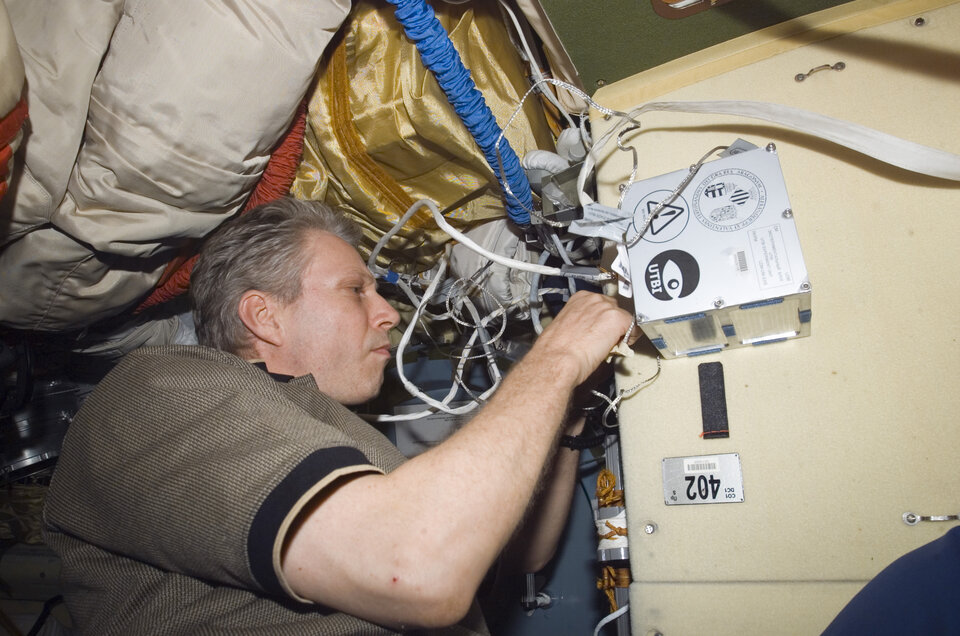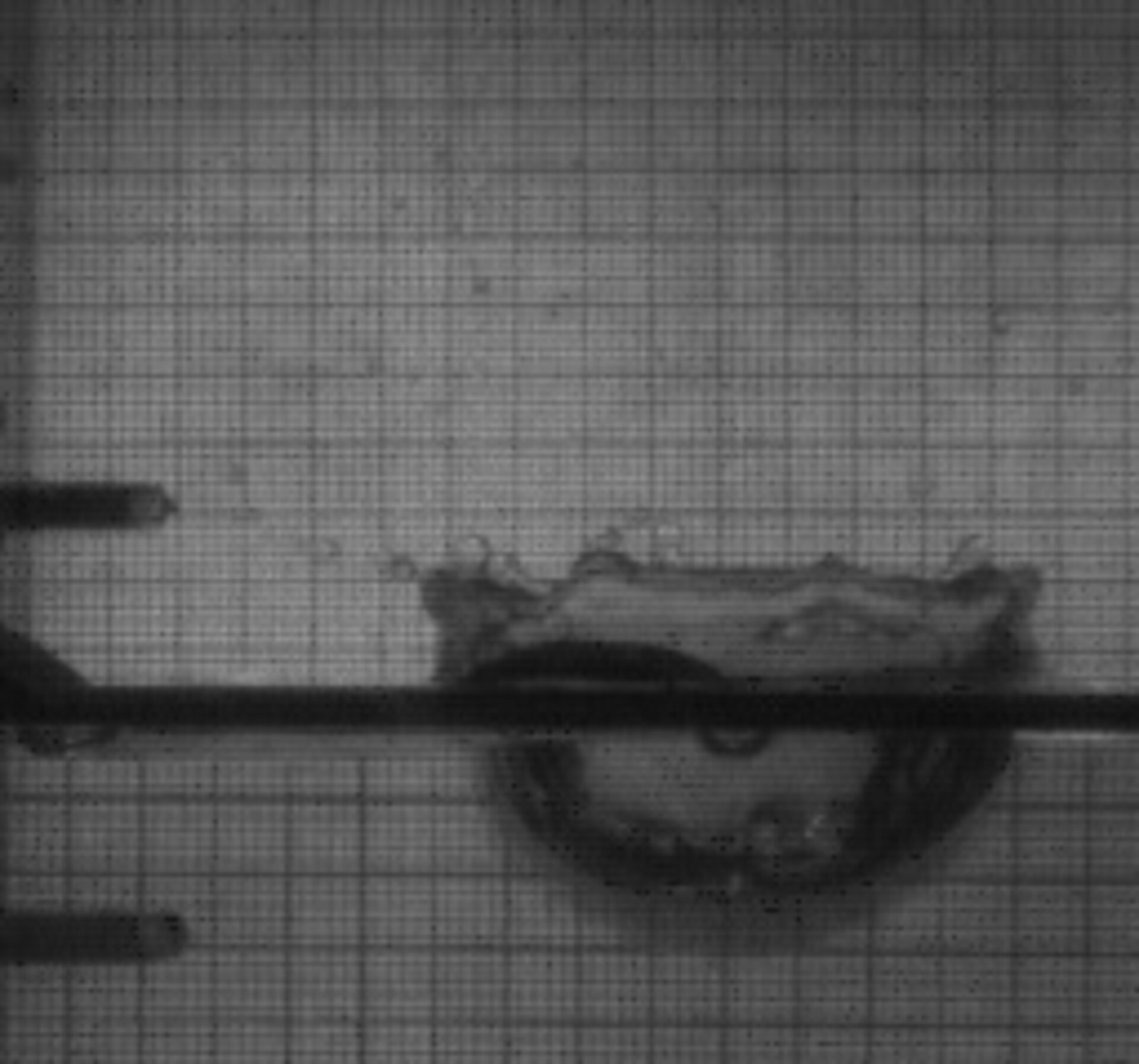Experiment examples in physical sciences
Orbital Liquid Experiment (OLE)
Proposed by José Mariano Lopez, Pablo Valls, Daniel Meizoso, and Fernando Mancebo Conducted during the 30th ESA Parabolic Flight Campaign in May 2001.
The first prize in the 1998 SUCCESS campaign was awarded to the Spanish Orbital Liquid Experiment (OLE).
Drop impact on a fluid surface mainly depends on the Weber and Bond numbers - respectively the kinetic energy and the gravitational energy of the drop - both normalised to the surface energy of the fluid. Therefore every different impact condition can be associated with a certain point in the Weber-Bond plane.
In certain regions of this Weber-Bond plane different phenomena with respect to the impact of the drop can be observed such as:
Bounce: A thin gas layer inhibits contact between drop and fluid surface and as a result the drop and fluid do not mix but the drop bounces back
Coalescence: After the initial impact, a fluid bridge appears between a “returning” drop and the main fluid
- Reflection: The process is similar to that of coalescence but now the fluid bridge breaks up and a new drop separates
The OLE experiment facility is built to investigate the interaction between impacting drops of various sizes and fluid surfaces under different gravity conditions.
Due to a delay in the assembly of the International Space Station, the OLE experiment could not be conducted on board ISS. A flight opportunity was offered on board a parabolic aircraft. During three parabolic flights, forty-four experiments were carried out in which new regions of the Weber-Bond plane were explored.
UTBI

Proposed by Javier Sanchis Munoz and Andres Russu.
Conducted on board the ISS during the German Astrolab mission in November 2006.
The radiation experiment UTBI (Under the Background Influence) tests a new type of radiation sensor which measured the background radiation levels inside the Russian segment of the ISS for 14 days. Radiation models that predict these radiation levels are verified and, if necessary, corrected with the experimental data.
The UTBI aluminium box contains the radiation detector, the electronics and the SD cards on which the sensor detection data is stored. The detector is made of an alloy of cadmium, zinc and tellurium. The advantage of using this specific detector is that it does not require cryogenic cooling.
Understanding radiation, its interaction with the ISS and its impact on the human body are important issues for long-duration missions, since radiation can cause severe health problems to the astronauts.






